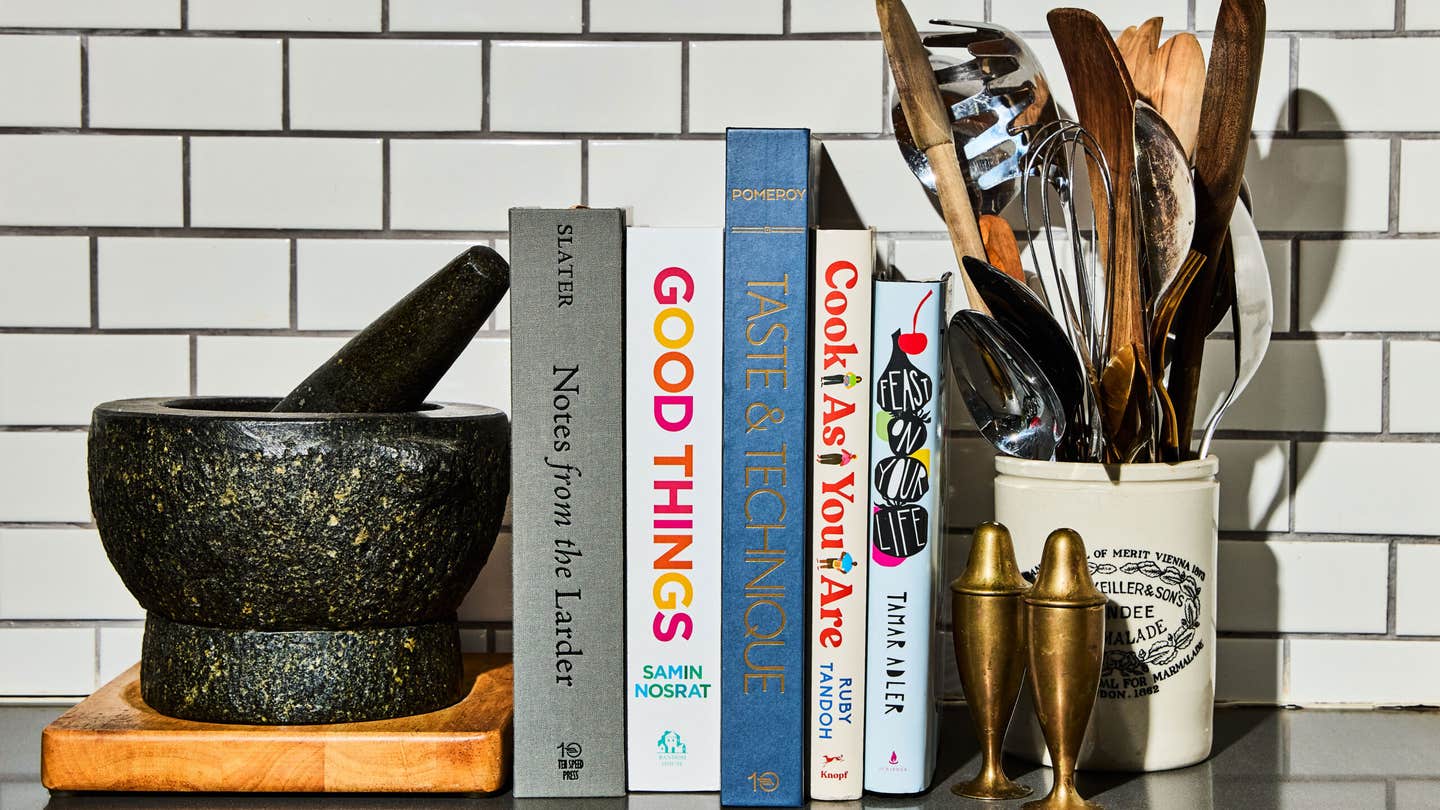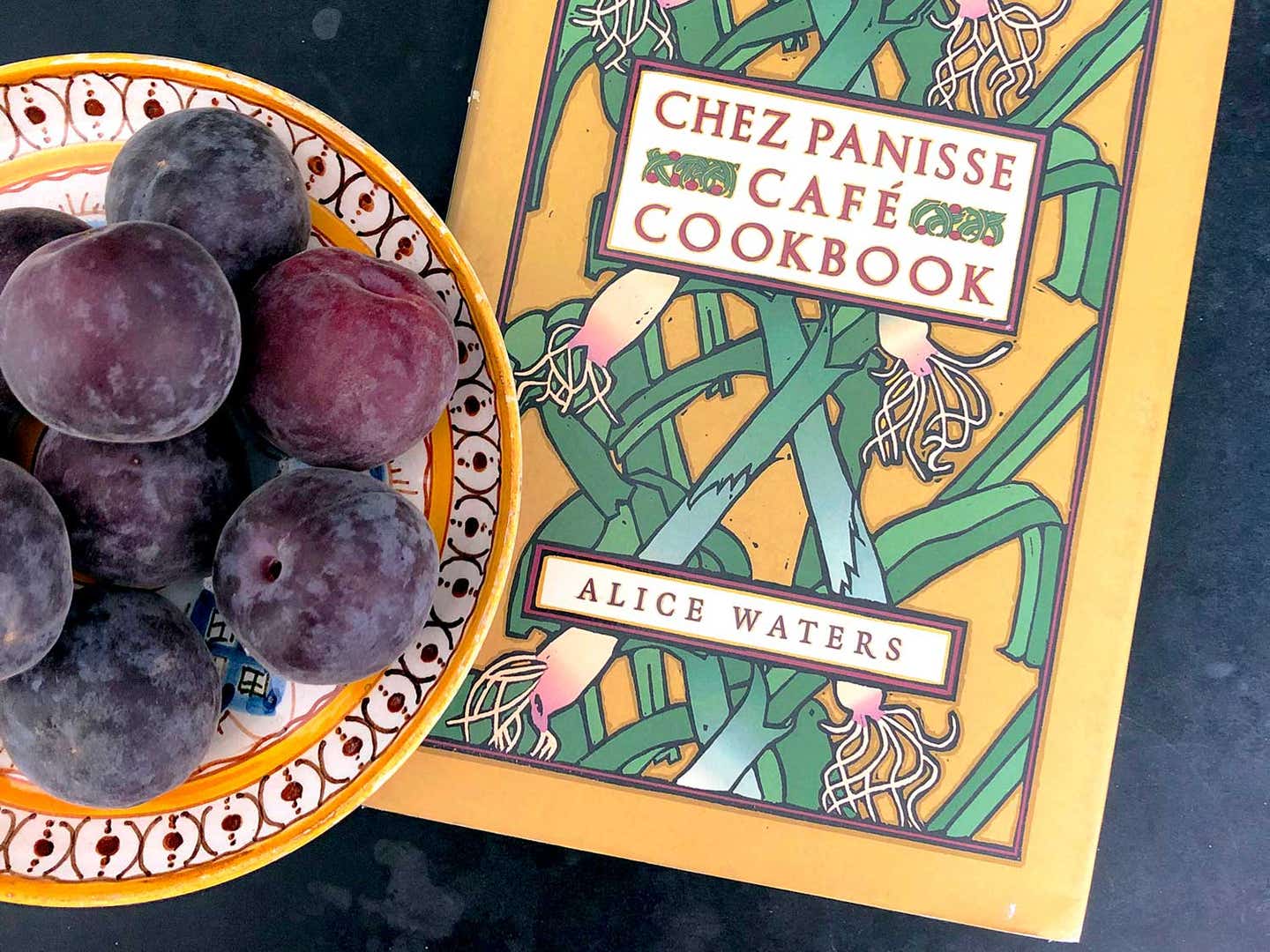
Alice Waters’ ‘Chez Panisse Café Cookbook’ Still Holds Up
A former Chez Panisse cook revisits the book and finds it just as relevant decades later.
The first question that's asked when someone says they've had dinner at Chez Panisse is "Downstairs or upstairs?"—which really means "Restaurant or café?" It's an attempt to decipher what sort of experience they've had at Alice Waters's Berkeley institution: was it the elegant, special-occasion meal with the hard-to-get reservation, or the other one? For us cooks in the café, it sometimes felt like we were perceived as second best. Sure, we were a little bit in awe of the cooks in the downstairs restaurant, but we were no slouches: each of us had auditioned for our positions by preparing a personalized menu for Alice and the head chefs. Each of us had also thoroughly absorbed the Chez Panisse ethos: we often spent our days off as a group—front- and back-of-house combined—hunting for mushrooms in the woods or making seasonal fruit liqueurs.
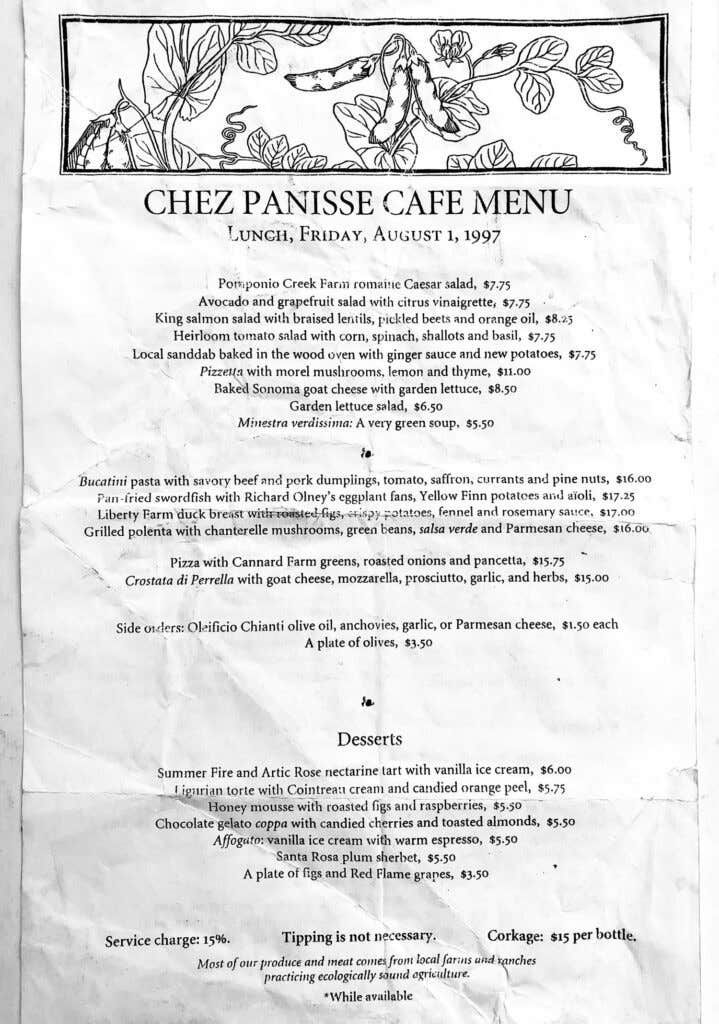
When I was coming up as a cook in the 1980s, I wanted to devour every morsel of culinary information I could. The chef I worked for in Cambridge, Massachusetts at the time often cited Chez Panisse, a restaurant in California I'd never heard of, as inspiration. During a slow service one night, I was sitting on an upturned plastic milk crate, poring over the kitchen's copy of the Chez Panisse Menu Cookbook, when a Harvard-educated busboy walked by and asked me what I was reading. When I showed him, he snickered: "I've never seen anyone read the introduction to a cookbook before!" I was in fact reading the section called "What I Believe About Cooking," in which Alice discusses the effect of industrialization on how we interact with food, and the importance of using all our senses when we cook. Enthralled, I read the book over and over and cooked from it at home, then did the same with Chez Panisse Pasta, Pizza & Calzone and Chez Panisse Cooking.
I continued to be enchanted by Chez Panisse as I moved along in my cooking career: I made a couple of pilgrimages to the café during my twenties; I even had my chef make a call so that I could spend one of my only vacation days prepping in their kitchen. When the café had an opening for a cook a few years later, I jumped at the opportunity. And that's how I found myself working there when the Chez Panisse Café Cookbook was being written in 1997.
While there's only one name on the cover, if you flip to the title page, it says "Alice Waters and the Cooks of Chez Panisse in collaboration with David Tanis and Fritz Streiff." The book contains the collective wisdom of everyone in the Chez Panisse café kitchen that year—the people who spent every day sourcing the best ingredients and looking for the most delicious way to showcase them. All the cooks, myself included, were invited to contribute recipes to the book. (My nettle omelet was later changed to a frittata.) Many of the dishes are classics, described in such perfect detail that you can make them exactly the way the cooks at the café did—and still do 20 years later.
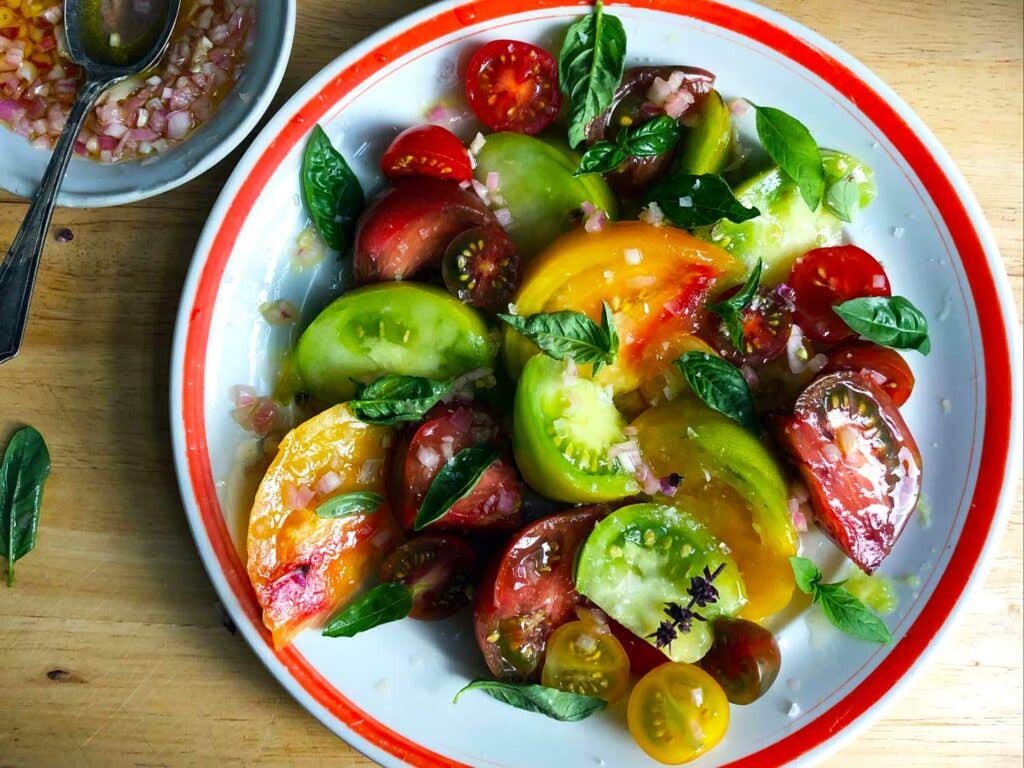
You probably don't think you need a recipe for heirloom and cherry tomato salad or a garden lettuce salad, but the recipes in the Chez Panisse Café Cookbook will give you excellent results. There are also foolproof methods for hard-cooking eggs and slow-cooking wild salmon. Simple recipes such as roast chicken or fresh ricotta baked with herbs and olive oil show the difference the quality of your ingredients can make. For the experienced or ambitious cook, the book also contains plenty of projects: charcuterie, from a classic country terrine with pistachios to head cheese to home-cured pancetta; braises including beef cheeks in red mole; and homemade sausages, from spicy merguez-style lamb to the refined boudin blanc.
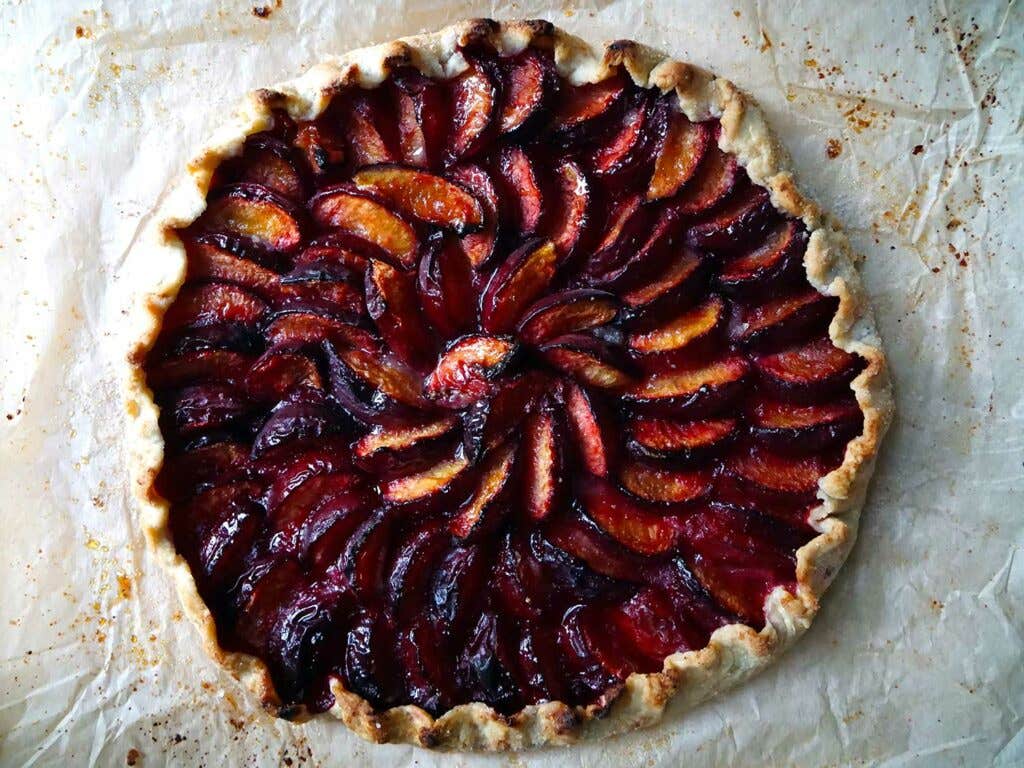
There’s also my favorite breakfast from my time at the café: the plum galette. Each morning the pastry cooks would place the desserts left over from the night before on a counter in the kitchen, and I would always keep an eye out for the galette. The fruit in the tart changed according to the season, but the tender, barely sweetened crust remained constant. It was perfect with coffee, and I could never resist cutting more slivers of it as I walked by throughout my shift.
Interspersed throughout the recipes in the book is Alice’s inimitable voice. The preface is a firsthand account of the origins of the café and why it was a key part of her vision. Alice had always wanted the downstairs restaurant “to be all things to all people,” but it didn’t turn out that way. She tried again and succeeded with the upstairs café: “...cooks and diners should interact and cooking smells should fill the room. And in the Café they do,” she writes. Alice also shares stories of foragers appearing at the back door with their finds, delves into how the biodynamic farmer Bob Cannard grows his carrots, and even recounts a visit from the Dalai Lama.
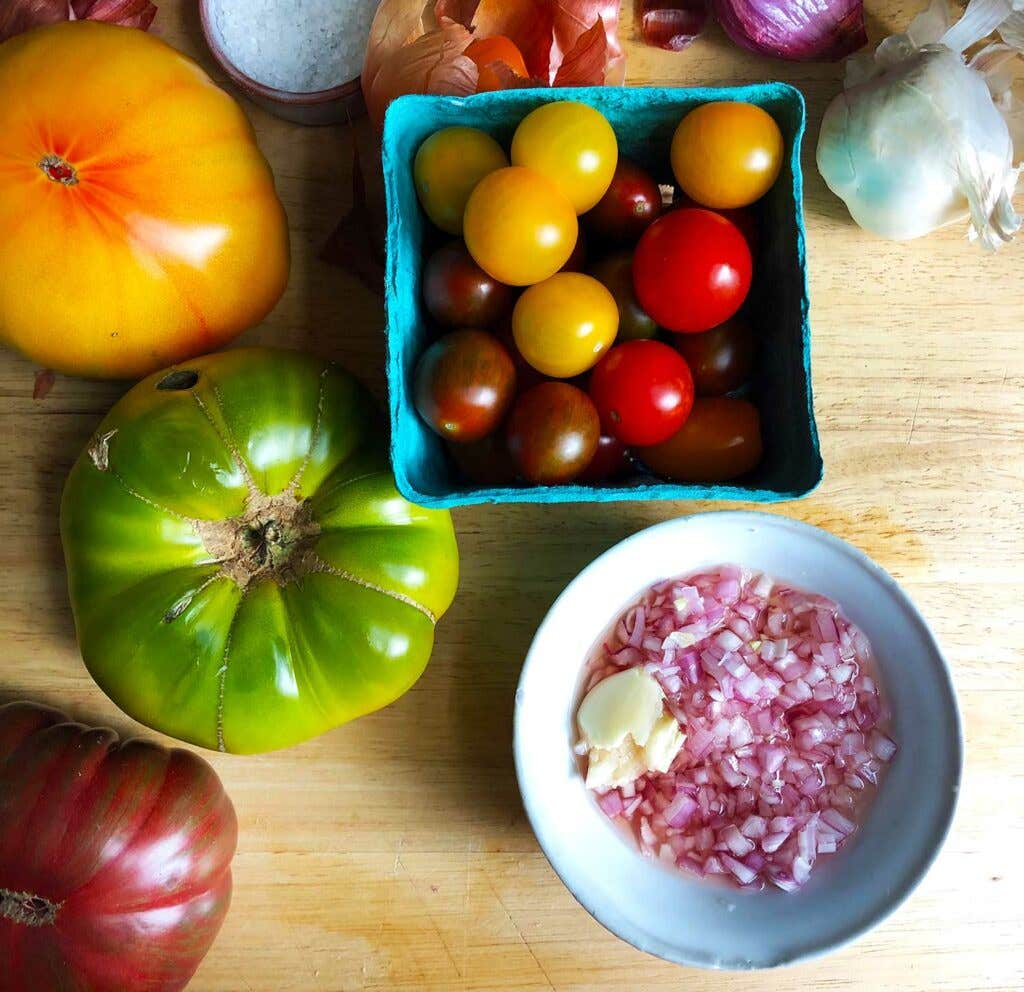
In the Vegetables chapter, Alice writes about her obsession with the basket of produce on display at the café. Every day, a selection of fruits and vegetables that “looks the most beautiful and the most nearly as if it had been picked that very morning” is arranged on the bar, so that it’s the first thing guests see when they enter the room. She continues: “The display is our way of sharing our pleasure in the colors and textures of the raw materials we use in our cooking and hinting at what is on the menu that day.”
The tenderness with which Alice treated ingredients extended to every part of the Chez Panisse world. I certainly had never worked at a restaurant with an entire outdoor cage for tomatoes, just to make sure that they would carefully ripen in the summer. From July to September, if a dish with tomatoes was on my station, I would trot down the back stairs in my clogs, open the latch to the hand-built wooden-and-mesh “room” where tomatoes of all colors and sizes were neatly stored on trays, and pick only what I needed for the evening.
In the 20 years since the Chez Panisse Café Cookbook was published, so many books have touted the seasonal and local, and the simple and rustic, that it's easy to forget that that hasn't always been the case. Just like the restaurant, the Chez Panisse Café Cookbook was both ahead of its time and still has a place in the world today.
Keep Reading
Continue to Next Story









